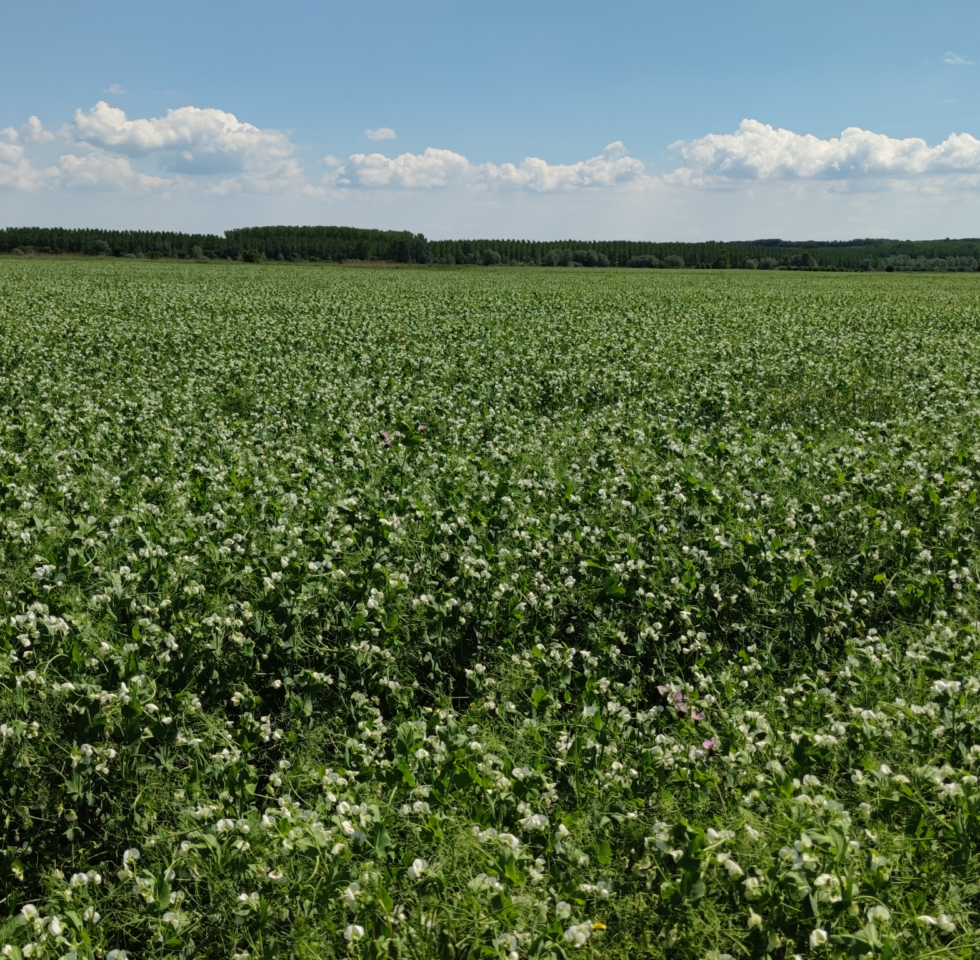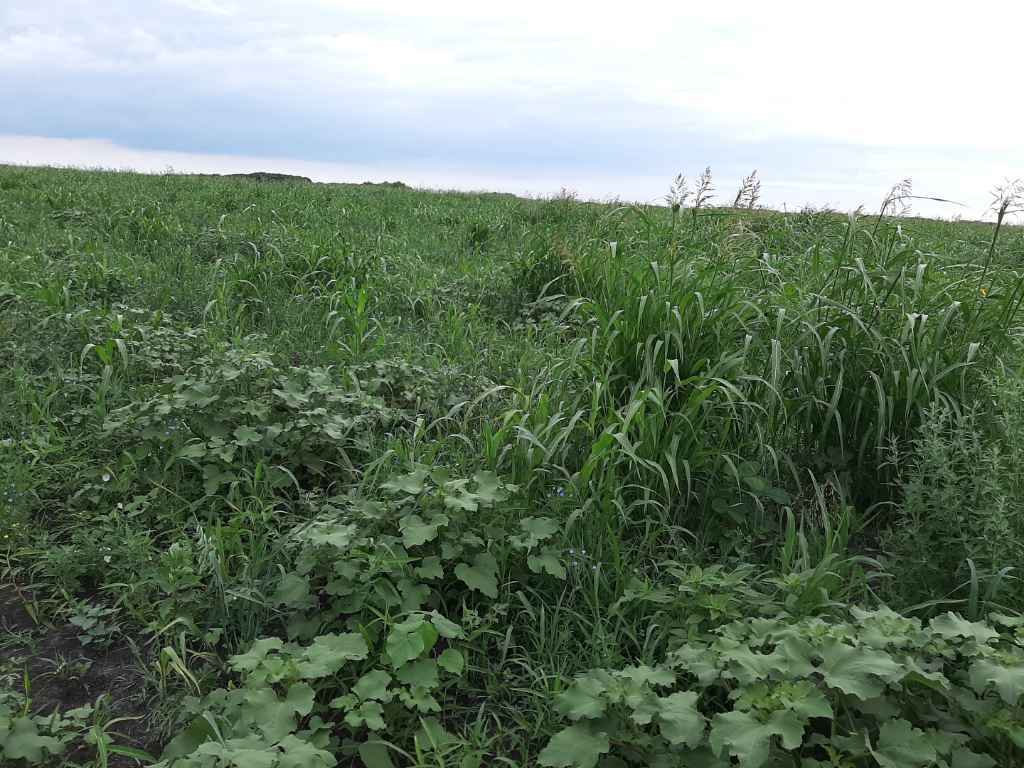How We Tackle Weeds in Organic Chickpeas
June 23, 2025We’re back in the field with our chickpea cultivation series! See how we tackle weeds after emergence using inter-row cultivation.
Read articleUnlock the true potential of cover crops for soil health and sustainability. Learn from LoginEKO's experience and discover optimal seeding rates in our latest blog post.

During the recent Agricultural Fair in Novi Sad in Serbia, one of the members of the LoginEKO Agro R&D team, Đura Karagić had an intriguing encounter with the owner of a Hungarian family seed company specializing in cover crops, also known as ‘green manure crops.’ As she handed him their product catalog, filled with recommendations for manufacturers, one entry caught his attention. It emphasized the use of very low seeding rates for establishing cover crops (CCs). This recommendation struck a chord with Đura, as he remembered how LoginEKO followed similar recommendations in 2020, which turned out to be a complete failure. Đura and his team have learned a lot since then, and they are sharing their knowledge so your plants won’t struggle amidst a wild and unruly army of weeds. Instead, you can discover the true value of CCs.
The EU Common Agricultural Policy for the period 2023–2027 brings forward significant reforms aimed at promoting intelligent, competitive, sustainable, and diversified agriculture and forestry while nurturing rural communities and protecting the environment. At the heart of these reforms lies the recognition of conservation agriculture practices, with a particular emphasis on the utilization of CCs, as indispensable measures for protecting and enhancing soil quality and health.
When integrated into the soil, CCs demonstrate remarkable positive impacts on crucial soil characteristics, such as carbon content and nutrient levels, leading to a significant boost in overall soil health. However, their influence extends beyond these aspects. CCs play a vital role in reducing nutrient leaching, improving soil structure, enhancing water retention capacity, and improving the overall biological quality of the soil. This multi-faceted array of benefits makes CCs an invaluable tool in the realm of soil conservation policies, as they can be directly managed by farmers and policymakers to combat issues such as soil organic matter decline and erosion.
While CCs undeniably offer a plethora of benefits for soil health and climate change mitigation, farmers adopt them for different motives. Many farmers recognize their positive effects on soil health and climate change mitigation, but some still prioritize subsidies as the primary motivation for implementing CCs, with the aim of maximizing their economic gains. In a study conducted by Kathage et al., in 2022, it was found that 80% of adopters grew catch and cover crops primarily due to greening subsidies. However, 38% of the farmers surveyed cited additional reasons as relevant factors for adopting CCs.
In 2020, LoginEKO team followed the instructions of a seed supplier, who suggested a seeding rate of 35 kg/ha for our mix consisting of 47% of peas, 30% of spring oats, 10% of phacelia, 5% of submediterranean clover, 3% of tillage radish, 3% of oil radish, and 2% of white mustard. The result was a sparse growth of pea plants and an overwhelming infestation of weeds in our plot.

LoginEKO’s experience was not isolated because, at least in Europe, certain companies that produce and market CC seed mixtures recommend surprisingly low seeding rates in their guidelines. This stands true especially for mixtures containing legume seeds of medium to large sizes like vetch, peas, and broad beans. One example is a producer who suggests a seeding rate of only 25 kg/ha for a mixture containing 40% hairy vetch, resulting in only 10 kg of legume seeds being sown per hectare. This blend is marketed as a solution for achieving green cover, erosion control, soil structure improvement, and nutrient provision.
Now, experienced producers understand that such minimal seeding rates, at least four times lower than the optimal rate, cannot effectively meet desired production objectives. These recommendations can only provide a false sense of accomplishment for the farmer. But not all farmers have enough experience at the beginning, so they naturally trust the sellers.
A possible explanation for the suboptimal seeding rate recommendations by certain seed sellers is the desire to make the price of their products more appealing to producers. However, this raises concerns about the long-term consequences and effectiveness of the CCs. Once farmers realize that their crops have failed to effectively suppress weed growth or achieve the desired objectives, it becomes questionable whether they will continue to purchase seeds from the same seller.
Interestingly, in some cases, farmers in the EU can still receive subsidies regardless of the actual outcome of their CCs. This creates a situation where minimizing production costs becomes more important than achieving optimal results. Consequently, some farmers may be willing to compromise on the seeding rates, despite the potential negative impact on the overall effectiveness of the CCs.
Farmers who are committed to maximizing the benefits of growing CCs should take a critical approach towards the seeding rate recommendations provided by seed sellers. Instead, they should seek guidance from local experts who have a deep understanding of the specific region and its agricultural practices. When consulting with local agronomists or cover crop experts, farmers can get tailored recommendations that take into account local conditions, climate, and farming systems. By engaging with these experts, farmers can then tap into their expertise and make well-informed decisions regarding the most effective seeding rate for their cover crop mixture.
Taking a collaborative approach by involving local experts ensures that farmers can optimize their cover crop practices. This, in turn, enables them to achieve the desired outcomes, including improved soil health, effective erosion control, efficient nutrient management, and overall sustainability. It is crucial for farmers to exercise caution and make informed choices that lead to successful cover crop implementation and long-term benefits for their farms.
***
References:
We’re back in the field with our chickpea cultivation series! See how we tackle weeds after emergence using inter-row cultivation.
Read articleTwo days, three farms, one shared goal: growing hemp more sustainably. Here’s what we learned and shared during our tour of Prekmurje.
Read articleChickpeas offer great potential for organic farming. Join us as we walk you through the essential steps of chickpea cultivation, starting with seedbed preparation.
Read article